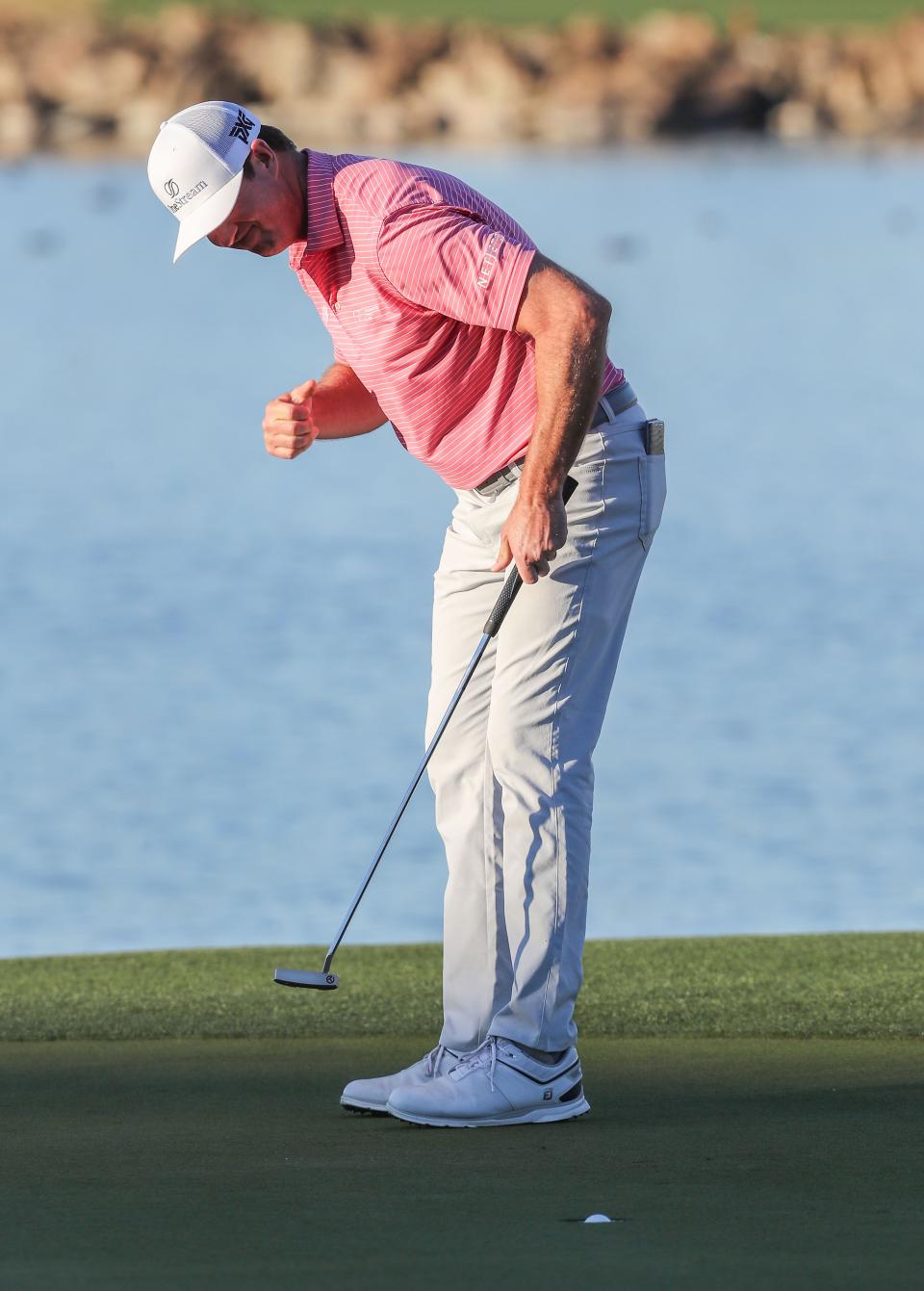Defending champions spin intriguing stories at The American Express

It has always been rare for a PGA Tour event to be played without its defending champion unless that champion has an injury that forces him out of action.
That won’t be the case for The American Express in La Quinta this week. Its defending champion, Hudson Swafford, won’t be at PGA West or La Quinta Country Club. Swafford, who also won The American Express in 2017, made the decision to sign with the LIV golf tour last spring and became one of more than a dozen golfers suspended from the PGA Tour by Commissioner Jay Monahan.
Swafford’s absence this week adds to a list of intriguing tales in the tournament’s 64 years about defending champions. Most defending champions show up, play well or miss the cut and that’s the end of the story. But at The American Express, the defending champions have produced some compelling stories through the years.
For instance:
Doug Sanders
Year as defending champion: 1967
Result: Second by one shot
Host course: La Quinta Country Club
The story: Sanders had denied Arnold Palmer a third Bob Hope title in seven years with a playoff win in 1966, and the colorful Sanders played well again as the defending champion. A fourth-round 67 put Sanders at 9 under for the week, leading the tournament by one shot over Tom Nieporte, a touring pro and the head pro at Piping Rock Country Club on Long Island (later head pro at Winged Foot). Sanders still led by one shot after nine holes on a day when birdies were tough to come by. But on the back nine, Nieporte outplayed Sanders, including making a 12-foot birdie on the final hole to take the lead. Sanders, playing in the group behind Nieporte, could only hit it to 30 feet on the 18th green and couldn’t coax the putt into the hole. The win was the biggest and the last of Nieporte’s three tour wins, and Sanders missed his chance at tournament history with a final-round 71.
Bob Rosburg
Year as defending champion: 1973
Result: Withdrawal
Host course: Bermuda Dunes Country Club
The story: Rosburg had won the 1972 tournament for his first win in 11 years, beating Lanny Wadkins by a shot to become the tournament’s oldest winner at 45 years old. So it was probably asking too much for Rosburg to contend again in 1973. As it turned out, Rosburg was never in contention as the defending champion. After a solid 69 in the opening round, Rosburg fell back with rounds of 74 and 77 before a 70 in the fourth round allowed him to make the cut at 2-over 290. That left Rosburg 17 shots out of first place, and before the fifth round Rosburg withdrew. Why? There was never any official word reported as to why Rosburg withdrew. But it is possible the famously curmudgeonly Rosburg saw the rain and the wind and the cold of the final Sunday and figured a withdrawal wasn’t the worst thing. Rosburg remains the only past champion to withdraw during the tournament the next year.
Johnny Miller
Year as defending champion: 1976
Result: Winner
Host course: Indian Wells Country Club
The story: Miller was a red-hot player in the mid-1970s, especially on the West Coast where he earned the name The Desert Fox. Miller had won the 1975 tournament by three shots, but no player had ever repeated in the tournament that featured five days and rotating courses. Miller put an end to that streak, but it took a final-round 63 at Indian Wells Country Club to produce another three-shot victory, this time over Rik Massengale. Miller started the day two shots behind fourth-round leader Billy Casper, who stumbled to a 74. The win not only solidified Miller’s status as a great West Coast player but made him just the third golfer at the time, along with Arnold Palmer and Casper, to have won the tournament at least twice.
Jesper Parnevik
Year as defending champion: 2001
Result: Did not play
Host course: Palmer Private Course, PGA West
The story: Parnevik’s one-shot victory in the 2000 tournament at 29-under par made him the center of attention in 2001. The only problem was Parnevik never made it to the desert that year. Parnevik’s wife was expecting the couple’s fourth child, and Parnevik waited for the birth in Florida. And waited. And waited. Finally, on Tuesday of tournament week, Parnevik withdrew from the tournament, becoming the first defending champion in event history to not play the next year. Tournament director Michael Milthorpe said the tournament was disappointed but understood that family came first. The baby was born two days later, and Parnevik finished second in the tournament three years later.
Bill Haas
Year as defending champion: 2011
Result: Lost in a playoff
Host course: Palmer Private Course, PGA West
The story: Haas won a dramatic victory in the 2010 tournament to earn his first PGA Tour title. Famously, only Johnny Miller has repeated as a winner in the desert, and that was 35 years earlier. But Haas came as close as anyone in 2011. Haas played well in the first three rounds, but it was a 10-under 62 in the fourth round at the Palmer Course that put him back in contention. Haas then shot 66 on the course in the final round, forging a tie after 90 holes with Jhonattan Vegas and Gary Woodland. On the first playoff hole, the par-5 18th, Vegas and Woodland made birdies while Haas saw his chances of back-to-back wins end with a simple par. Vegas would go on to win the tournament on the second playoff hole, but Haas because the only past champion to lose the event in a playoff the next year. He would win the title again in 2015.
This article originally appeared on Palm Springs Desert Sun: American Express: Defending champions spin intriguing stories

